In the rich tapestry of Aztec mythology, a pantheon of deities shaped the lives and beliefs of an ancient civilization. Among these divine figures stands Tlaloc, the revered rain god, whose influence extended far beyond mere weather patterns. Tlaloc’s realm encompassed fertility, agriculture, and the very essence of life and sustenance for the Aztec people. His significance in Aztec culture cannot be overstated; he was a deity intimately linked with both benevolence and wrath, life-giving rains and devastating storms. This article aims to provide a comprehensive and factual exploration of Tlaloc, delving into his origins, symbolism, and enduring legacy. Through a careful analysis of historical texts, artifacts, and scholarly interpretations, we endeavor to unveil the mysteries surrounding this powerful Aztec deity, shedding light on an aspect of Mesoamerican heritage that continues to fascinate and enlighten.
| Attribute | Tlaloc Information |
|---|---|
| Origin | Aztec Mythology |
| Deity Type | God of Rain, Water, and Storms |
| Role | God associated with rain, water, fertility, and agricultural abundance |
| Appearance | Often depicted with goggle-like eyes and fangs, symbolizing storm clouds |
| Offerings | Revered with offerings and sacrifices to ensure rainfall and agricultural success |
| Cultural Impact | A central figure in Aztec religion, symbolizing the vital role of rain in agriculture |
| Depictions | Featured in Aztec art, rituals, and mythology, especially those related to agriculture and weather |
I. Historical Context of Tlaloc
Origin in Aztec Mythology
Tlaloc, an ancient and significant god in Aztec mythology, held a revered status as the bringer of rain, a vital element for survival in Aztec agrarian society. Tlaloc’s origins trace back to earlier Mesoamerican civilizations, signifying deep-rooted cultural significance. He wielded control over elemental forces capable of nurturing or destroying, serving as a guardian of both the heavens and the earth.
Role in Aztec Society and Religion
In Aztec society, Tlaloc’s role transcended mere mythological narratives. He was integral to the agricultural cycle, and thus, to the very survival of the Aztecs. Ceremonies and rituals dedicated to Tlaloc were crucial, often involving intricate rituals and offerings to appease him for rainfall and to prevent his wrath in the form of droughts or floods. His temples, notably the one at Tenochtitlán, stood as testaments to his importance, serving as centers for worship and communal gathering.
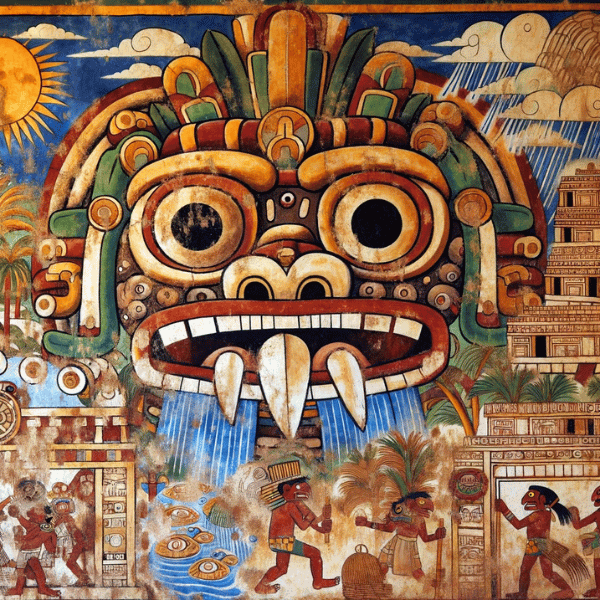
Comparative Analysis with Other Cultures
Tlaloc bears similarities to other rain deities across various cultures, highlighting a universal recognition of the rain’s importance. For instance, the Greek god Zeus and the Hindu deity Indra also wield control over rain and thunder, though their narratives and attributes show cultural specificities. Tlaloc’s character closely ties to the natural cycle and sustenance, unlike Zeus, celebrated for his leadership among gods, or Indra, known for heroic feats. This comparative analysis underscores the varied ways in which different cultures have personified natural phenomena to understand and influence their environments.
II. Iconography and Symbolism
Description of Tlaloc’s Iconography
Tlaloc’s depiction in Aztec art is both distinctive and symbolic. He frequently appears with goggle-eyed features and fangs, with artists depicting his visage in various mediums like sculptures, murals, and pottery. One of the most notable representations is the giant stone monolith, the Tlaloc Stone. Tlaloc’s images commonly include a headdress symbolizing his connection to the mountain, from which people believed he sent rains. These artistic representations were not merely decorative; they were imbued with religious significance and played a role in ritualistic practices.
Symbols Associated with Tlaloc
Several symbols are recurrently associated with Tlaloc, each carrying deep meanings. Rain, the most obvious, represents life and renewal, essential for agriculture. Jaguars, another frequent motif in Tlaloc imagery, symbolize strength and ferocity, reflecting the god’s power over natural elements. Serpents, often depicted in conjunction with Tlaloc, symbolize water and fertility. These symbols collectively underscore Tlaloc’s dominion over the natural world and his dual nature as a life-giver and a destroyer.
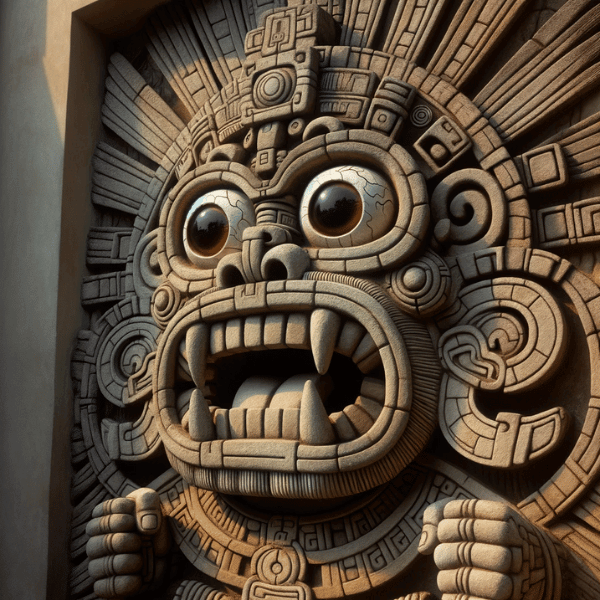
Interpretation in Aztec Art and Architecture
In Aztec architecture, Tlaloc’s imagery is prominently featured in temples and ceremonial spaces, emphasizing his importance in religious and daily life. The Templo Mayor in Tenochtitlán, a dual temple dedicated to Tlaloc and the war god Huitzilopochtli, illustrates this blend of religious and artistic reverence. The temple’s design, with elements symbolizing water and fertility, reflects Tlaloc’s integral role in Aztec cosmology.The Aztecs’ understanding of the world deeply intertwined artistic expressions, showcasing a civilization that found profound meaning in the symbiosis of art, religion, and the natural environment, rather than being mere artistic endeavors.
III. Myths and Legends Surrounding Tlaloc
Prominent Myths Involving Tlaloc
One of the central myths involving Tlaloc is the story of his marriage to Xochiquetzal, the goddess of beauty, love, and flowers. This union symbolized the essential balance between rain and the flourishing of nature. Another significant legend tells of Tlaloc’s disagreement with Tezcatlipoca, another powerful deity, resulting in Tlaloc withholding rain, thereby demonstrating his crucial role in the natural world. Additionally, the tale of Tlaloc’s demand for child sacrifices, a practice believed to ensure rain and good harvests, reveals the darker aspects of his worship and the profound respect and fear he commanded among the Aztecs.
Themes and Morals in Tlaloc Myths
The myths of Tlaloc encompass themes of balance, sacrifice, and the duality of nature. The story of his marriage to Xochiquetzal, for instance, underscores the interdependence of different natural elements for harmony and prosperity. The narratives often reflect the moral that while Tlaloc was a benevolent provider, he could be wrathful if not properly revered, illustrating the Aztecs’ understanding of the unpredictable and sometimes harsh aspects of the natural world.
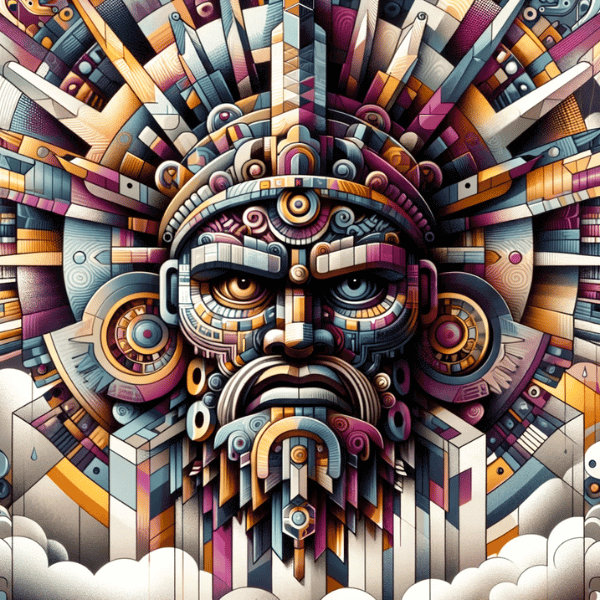
Role in Aztec Creation Stories and Cosmology
In Aztec cosmology, Tlaloc played a pivotal role in creation stories. He was one of the creator gods who participated in the creation of the world and humanity. In some versions of the Aztec creation myth, Tlaloc is credited with providing the vital element of water, essential for the first humans’ survival. His domain over rain and water sources also positioned him as a guardian of earthly life, emphasizing his importance not just in mythology but in the very existence and sustenance of the Aztec people. This cosmological role cements Tlaloc’s status as a fundamental deity in the Aztec pantheon, reflecting the deep connection the Aztecs felt with their environment and the forces that governed it.
IV. Rituals and Worship
Rituals and Ceremonies Dedicated to Tlaloc
Tlaloc was worshipped through various rituals and ceremonies, deeply rooted in Aztec religious practices. The most significant of these was the Atlcahualo ceremony, conducted in early spring to ensure plentiful rain for crops. Priests, adorned in Tlaloc’s iconic imagery, performed intricate dances and offered copious sacrifices to invoke his favor. Another key ritual was the Atemoztli festival, held during the rainy season, where offerings of maize and tools were made to Tlaloc to thank him for his benevolence. These ceremonies were not mere religious formalities; they were integral to the Aztec’s interaction with the divine, embodying their hopes and fears related to agriculture and natural phenomena.
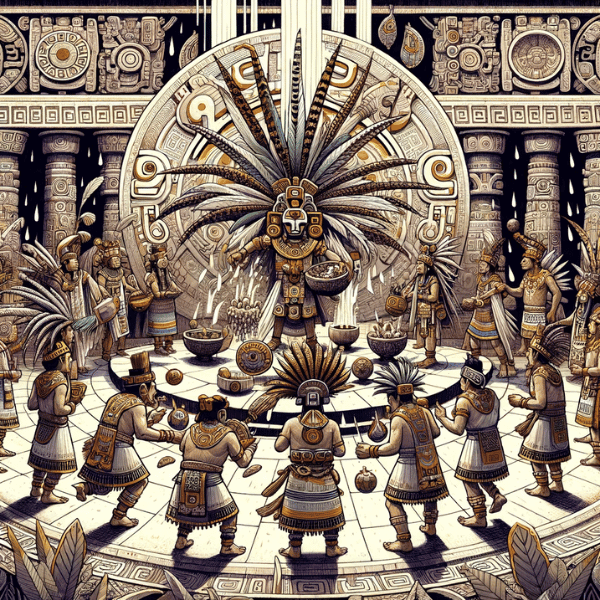
Societal and Agricultural Importance
The rituals dedicated to Tlaloc had profound societal and agricultural implications. They reflected the Aztecs’ deep understanding of their dependence on the natural cycles for survival. People believed that successful ceremonies ensured bountiful harvests and prevented natural disasters, thus maintaining the balance and prosperity of the community. These practices also reinforced social cohesion and hierarchical structures within Aztec society, as participation in these rituals was a collective effort, involving everyone from the highest priests to the common people.
Historical Context and Modern Perspectives
One of the most controversial aspects of Tlaloc worship was the practice of human sacrifice, particularly the sacrifice of children. In history, people viewed these sacrifices as the ultimate offerings to appease Tlaloc and secure his blessings, believing that the tears of the children held special power as they symbolized the rain. In modern times, this practice has been the subject of much debate and reinterpretation. Contemporary scholars actively view it within the context of Aztec religious beliefs and societal norms, actively understanding it as part of a larger cosmological worldview where they deem sacrifice necessary for the continuation of life and the universe. This aspect of Tlaloc worship, while unsettling to modern sensibilities, provides insight into the complexities and depths of Aztec religious practices and their profound connection to the natural world.
V. Tlaloc’s Legacy in Modern Culture
Influence on Contemporary Mexican Culture
Tlaloc’s legacy endures in contemporary Mexican culture, symbolizing a deep connection to the nation’s pre-Hispanic past. His image and mythology are woven into the cultural tapestry, often seen in art, festivals, and community celebrations. Tlaloc remains a symbol of the power and importance of natural elements, especially water, in Mexican life. This enduring presence highlights the respect for indigenous heritage and the continued relevance of ancient beliefs in modern times.
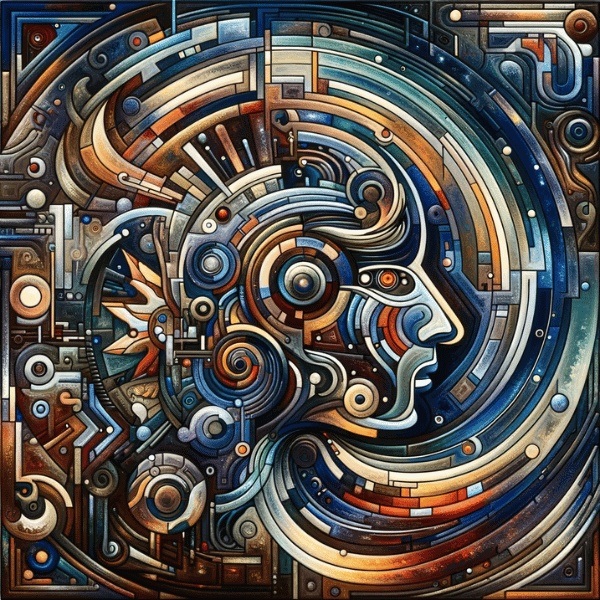
Tlaloc in Modern Media and Literature
In modern media and literature, Tlaloc has been reimagined and reinterpreted in various forms. He appears in novels, poems, and artworks, often symbolizing themes of fertility, life cycles, and nature’s power. In films and video games, Tlaloc is sometimes depicted as a character, reflecting a blend of historical accuracy and creative interpretation. These portrayals contribute to a broader understanding and appreciation of Aztec mythology, bringing ancient stories to new generations.
Transformation of Tlaloc’s Image Over Time
Over time, Tlaloc’s image has undergone a significant transformation. He was once feared and revered as a powerful deity capable of both benevolence and wrath, but now, modern understandings of mythology and history cast him in a more nuanced light. This transformation reflects a broader cultural shift in how contemporary society perceives and integrates ancient deities and myths. Tlaloc’s evolving image signifies a dynamic relationship between the past and present, where ancient symbols continue to find relevance and new meanings in the modern world.
VII. Conclusion
Throughout this exploration of Tlaloc, the Aztec rain god, we’ve uncovered the depth of his influence in Aztec mythology, from the pivotal role he played in rituals and society to his powerful symbolism in art and architecture. Tlaloc’s myths and legends, imbued with themes of life, balance, and the duality of nature, underscore his significance not only as a deity but also as a cultural emblem. His enduring legacy in modern Mexican culture, media, and literature highlights a continuous reverence and fascination with this ancient figure. Reflecting on Tlaloc’s journey from a revered deity to a symbolic figure in contemporary discourse illuminates the timeless relevance of ancient deities. They continue to offer insights into our understanding of the past, our relationship with the natural world, and their persistent influence in shaping cultural identities and perspectives in modern times.
